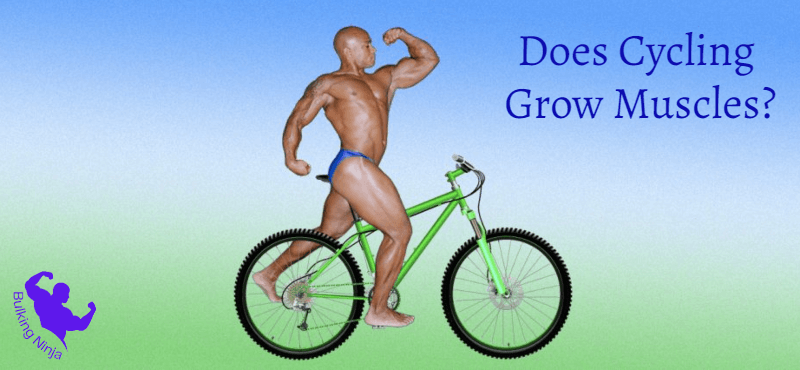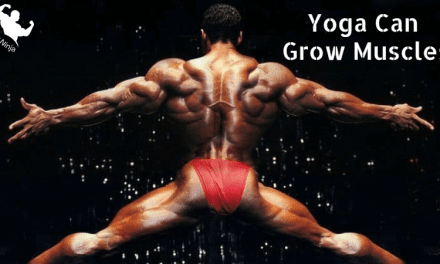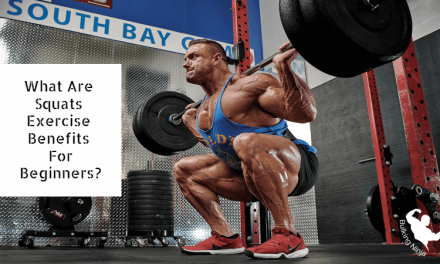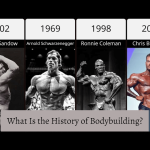For fitness enthusiasts, the pursuit of building muscle is often associated with weightlifting and resistance training. However, cycling muscles worked, with its rhythmic pedaling and scenic routes, has also emerged as a popular form of exercise for individuals seeking both cardiovascular benefits and increased muscle mass.
In this Article, we will delve into the science behind cycling’s impact on muscle growth, uncovering the truths, myths, and potential strategies to optimize your cycling routine for maximum muscle gains. Whether you’re a seasoned cyclist or a curious beginner, join us as we uncover the question: Does Cycling Grow Muscles?
When it comes to building muscle and achieving your fitness goals, incorporating cycling into your overall fitness program can be highly beneficial. Cycling is not only a form of aerobic exercise but also a great way to engage in resistance training for muscle development. Read more about Wide Grip push ups for grow muscles.
Table of Contents
- Does Cycling Grow Muscles?
- Can I Build Muscle by Cycling?
- What Muscle Groups Does Cycling Target?
- How Long Does It Take To Build Muscle?
- Which Muscles Does Cycling Strengthen And Build?.
- HOW DOES IT COMPARE WITH OTHER EXERCISES FOR MUSCLE-BUILDING?
- What are the Benefits of Cycling?
- Frequently Asked Questions
- Will My Legs Get Bigger From Cycling?
- Which Muscles Are Toned By Cycling?
- How Often Should You Cycle To Build Muscle?
- What Kind Of Cycling Builds Muscle?
- How long does it take to build muscle by cycling?
- How does cycling help build muscle?
- Does cycling improve body shape?
- Does Cycling Build Muscle Or Burn Fat?
- How Long Should I Cycle To Gain Muscle?
- Does Cycling Build Muscle In Legs?
- What Are Signs That Cycling build Muscles?
- How Do Cycling Take To Hardest Muscle And Easiest Muscles To Build Muscle?
- Conclusion
Does Cycling Grow Muscles?

To maximize your muscle gain with cycling, it is important to focus on both the intensity of your effort and the variety of routes you choose. By incorporating intervals and challenging terrain into your cycling sessions, you can stimulate different muscle fibers and promote greater muscle hypertrophy.
Cycling is a versatile and effective form of exercise that can contribute to your muscle gain goals. By including it as part of your fitness program and incorporating various types of resistance training, such as adjusting the settings on your bike and carefully selecting routes, you can stay fit, train your cardiovascular system, and achieve noticeable muscle growth while enjoying the numerous benefits it offers. Let’s start read benefits of wall pushups
Can I Build Muscle by Cycling?

Cycling is not only a popular form of exercise but also an effective method to build muscle mass. Through consistent cycling muscles worked, individuals can engage various muscle groups while enjoying the benefits of a low-impact exercise. Scientific studies have reviewed the positive effects of cycling on muscle size and strength. Read about Swimming can build muscles.
When it comes to targeting specific muscle groups, cycling focuses on the legs, making it an excellent choice for developing leg muscles. While exercises like leg extensions and back squats can provide more direct muscle stimulation, cycling offers a unique advantage with its low-impact nature, reducing stress on the joints. Futher more study Clapping Pushs Ups for Grow Muscle.
By incorporating cycling into a fitness routine, individuals can increase muscular endurance over time. Longer rides and riding at higher resistances challenge the muscles, leading to improved strength and resilience. This is especially advantageous for sportspeople. who rely on cardiovascular fitness and muscular endurance in their respective sports.Futher more study indoor Cycling grow muscles.
While cycling alone may not produce the same muscle gains as traditional weight training with loaded barbells, it complements a well-rounded fitness routine. By combining cycling with typical resistance training exercises and weight training, individuals can optimize their muscle development and achieve their goals for increased muscle size and strength. Futher more read Push ups and Pull ups can build muscles.
What Muscle Groups Does Cycling Target?
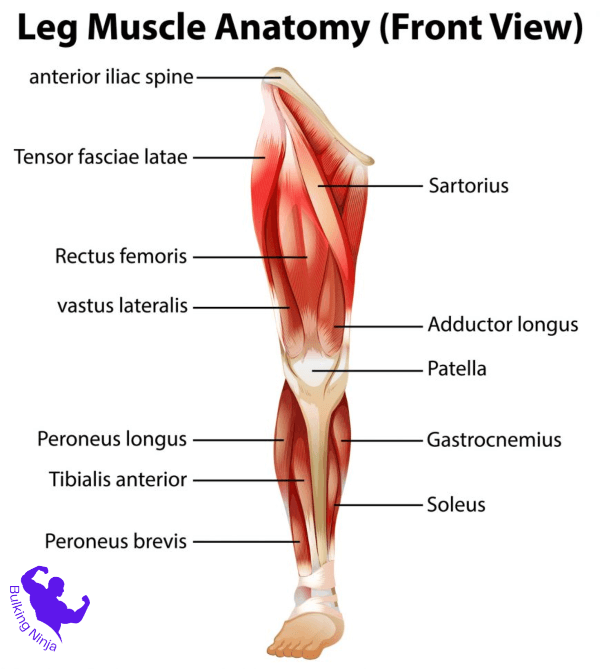
Cycling is a fantastic form of exercise for gaining muscle, particularly in the lower body. It engages various various muscle regions, such as, the Quads, Glutes, Hamstrings, Posterior chain, Calves, Thighs, Knees, Hip flexors, and Ankles.Read more about gain muscles without weight.
By incorporating cycling workouts into your fitness routine, you can effectively target and tone these muscles.While cycling muscles worked primarily focuses on the lower body, it can also contribute to toning the upper-body muscles, depending on the specific form of exercise and technique utilized. This comprehensive muscle engagement during cycling workouts allows for a well-rounded and balanced approach to building strength and achieving a toned physique. Let’s Start Your Bulking Journey with Martial Arts can Build Muscles.
How Long Does It Take To Build Muscle?
cycling with a focus on building muscle involves incorporating resistance, challenging rides, and progressive overload. By adjusting the resistance on your bike, pushing yourself to ride at higher intensities, and utilizing your body weight, you create an environment conducive to muscle growth. Read more about Dumbbell Lunges are good for Legs Muscles.
Regular cycling muscles worked sessions that target the leg muscles, particularly the calves, can lead to noticeable muscle development and enhanced strength.Whether you’re cycling outdoors or in a stationary setting, incorporating resistance and intensity variations into your rides will maximize the benefits and help you achieve your goals of gaining muscle with cycling. Let’s discuss more about Crossfit Workout for buil muscles.
Which Muscles Does Cycling Strengthen And Build?.

When it comes to gaining muscle with cycling, the main focus is on the legs. The quadriceps, calf muscles, glutes, hamstrings, and hip flexors are the key muscles that benefit from cycling.
These muscles are actively engaged during the pedaling motion, both during the down stroke and the upstroke. This engagement against resistance challenges and strengthens the muscles, leading to increased tone and definition.Read more about Best Exercises for Resistance training.
One of the significant advantages of cycling is that it allows individuals to target their main muscles while experiencing the cardiovascular benefits. Through consistent pedaling, individuals can improve their cardiovascular endurance while simultaneously working on their muscle development. Read more about build strength without building muscles.
The continuous effort exerted during cycling, especially during the upstroke and down stroke, provides a challenging resistance that helps build strength and endurance. Let’s Start Your Bulking Journey with gain muscle with just Dumbbells.
HOW DOES IT COMPARE WITH OTHER EXERCISES FOR MUSCLE-BUILDING?
cycling serves as a valuable tool for building muscle, especially when combined with traditional strength training exercises using weights. Cycling is a highly effective method to build muscle.
Elite riders
In events like the Tour De France provide evidence of the muscle-building potential of cycling.
Hill climbs and sprint races
Showcase the strength and endurance developed through cycling.
Traditional strength training exercises
Using weights in the gym offer greater resistance for muscle development.
Combining cycling and weights-based
Resistance training allows for a comprehensive approach to gaining muscle. Cycling and weights-based resistance training work hand in hand and complement each other.
Consistency and trainability
Are key factors in maximizing the benefits of cycling and strength training.
By incorporating cycling and weights-based resistance training, individuals can achieve significant muscle gains and overall fitness improvements.
Should I Cycle Every Day?
it’s essential to consider the role of rest and recovery in your workout routine. While cycling is an effective form of exercise, the body needs adequate time to rest and recover from strenuous activities.
Failing to prioritize rest can lead to a catabolic state, where the body breaks down muscle instead of building and repairing it. To ensure optimal muscle growth growth and progress, it is crucial to find a equilibrium amidst cycling and allowing the body time to rest and recover.
Engaging in regular cycling sessions helps stimulate muscle building and repair processes. By incorporating proper rest periods, you support these processes, allowing your body to rebuild and strengthen the muscles worked during cycling. Further more study about Jogging can grow muscles.
Moreover, rest and recovery play a vital role in maintaining a healthy immune system. Pushing your body too hard without giving it adequate rest can result in a weaker resistance to illnesses, making you more prone to getting sick and infections. By allowing your body sufficient time to recover, you promote a stronger resistance to diseases, which is vital for overall welfare.
What are the Benefits of Cycling?
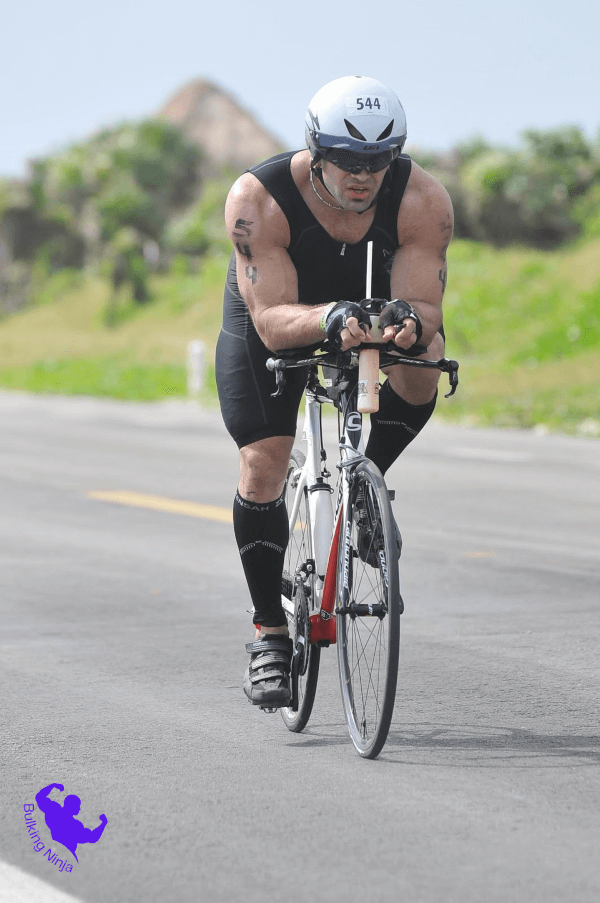
Outdoor cycling bikes are not only enjoyable but also offer numerous health benefits, making them wonderful cardio machines. Let’s explore some of these benefits.
Reduces Risk Of Cardiovascular Conditions
Cycling for gaining muscles provides several benefits, including reducing the risk of cardiovascular conditions. Regular cycling improves cardiovascular health by strengthening the heart and enhancing its efficiency.
It increases blood circulation, lowers blood pressure levels, and lessens the chance of heart conditions such as heart attacks, strokes, and other cardiac ailments. By engaging in cycling as part of your muscle-building routine, you not only work on developing your muscles but also promote a healthy heart and overall cardiovascular well-being.
Increases Stamina
By consistently engaging in cycling workouts, you gradually build endurance and improve your ability to sustain physical activity for longer periods. Cycling challenges your muscles, including those in your legs and core, and pushes your cardiovascular system to adapt and become more efficient.
As you progress, you’ll notice an increase in your stamina, allowing you to endure more intense workouts and engage in other physical activities with improved endurance. This enhanced stamina not only benefits your muscle-building efforts but also enhances your overall athletic performance and daily activities.
It’s A Low-Impact Workout
The nature of cycling puts minimal stress impact on your joints, lessening the probability of injuries commonly linked to with high-impact exercises. The smooth motions of cycling allow you to engage and strengthen your muscles without subjecting your joints to excessive strain.
This makes cycling a suitable option for individuals of different fitness levels and those who may have joint sensitivities or previous injuries. With its low-impact nature, cycling provides a safe and effective means to build muscle while minimizing the potential for joint discomfort or damage.
Improves Balance And Posture
The act of cycling requires coordination and balance, engaging various muscle groups throughout your body. As you pedal and maintain stability on the bike, you strengthen the muscles responsible for balance and develop better coordination skills.
Additionally, cycling helps promote proper posture by engaging the core muscles and aligning the spine. Regular cycling can contribute to improved balance, stability, and posture, which are essential for overall muscle development and overall body alignment.
Improves Your Mental Health
Cycling for muscle gain has the benefit of improving your mental well-being. Participating in regular cycling releases endorphins, known as “feel-good” hormones, resulting in a positive impact on your mood and overall mental well-being.
Cycling outdoors can also provide a sense of connection with nature and the surrounding environment, offering a refreshing and revitalizing experience. alleviate stress, anxiety, and signs of depression opportunity to explore new surroundings while cycling can help
By incorporating cycling into your muscle-building routine, you can enjoy the mental health benefits alongside the physical gains. More read about Breakfast is important for gaining Muscles.
Strengthens Your Legs
The pedaling motion engages various muscles in your lower limbs, including the quadriceps, hamstrings, glutes, and calves. By consistently cycling, you can develop and tone these leg muscles, leading to increased strength and endurance.
The resistance encountered while cycling, whether through uphill rides or adjusting the resistance on a stationary bike, further challenges and strengthens your leg muscles. Stronger legs not only contribute to improved athletic performance but also support overall mobility and stability in daily activities.
Can Help With Weight Loss
Cycling for muscle gain can help with weight loss. Regular cycling is a form of aerobic exercise that burns maintenance calories and promotes fat loss. Engaging in cycling workouts increases your heart rate, boosts your metabolism, and stimulates your muscles, leading to calorie expenditure and energy consumption.
As a result, cycling can contribute to creating a calorie deficit, which is essential for weight loss. By combining cycling with a balanced diet, you can optimize your muscle-building efforts while supporting your weight loss goals. Futher read about Important Types of Pushups for grow Muscles.
Frequently Asked Questions
Will My Legs Get Bigger From Cycling?
Cycling alone may take time to make your legs bigger. Lifting weights, such as heavy back squats, is a more efficient way to achieve leg growth.
Which Muscles Are Toned By Cycling?
Cycling primarily tones the muscles in the lower limbs, including
the quads, glutes,
hamstrings, posterior chain,
calves, knees,
hip flexors,
and ankles.
It has minimal impact on upper-body muscles such as the arms and shoulders.
How Often Should You Cycle To Build Muscle?
The frequency of cycling to build muscle depends on various factors, such as resistance level, incline, fitness level, and individual situations. There is no universal answer that fits all.
What Kind Of Cycling Builds Muscle?
Engaging in any form of cycling, whether it’s indoor cycling or mountain biking, can effectively enhance muscular endurance.
How long does it take to build muscle by cycling?
Building muscle through cycling can yield results within a 2-month training period, with an observed increase in muscle fiber size and the potential for larger and more powerful muscles.
How does cycling help build muscle?
Cycling helps build muscle through its resistance element, targeting and strengthening muscles in the glutes, hamstrings, quads, and calves, while also burning fat.
Does cycling improve body shape?
Yes, cycling can improve body shape as it helps in controlling or reducing weight, raises the metabolic rate, builds muscle, and burns body fat.
Does Cycling Build Muscle Or Burn Fat?
Cycling can both build muscle and burn fat, but for weight loss, it should be combined with a healthy eating plan.
How Long Should I Cycle To Gain Muscle?
Incorporating 30-60 minutes of cycling twice a week into a strength training program can be beneficial for gaining muscle without negatively impacting muscle size or strength.
Does Cycling Build Muscle In Legs?
Yes, cycling can build muscle in the legs, specifically targeting the quads, glutes, hamstrings, and calves. Incorporating weightlifting exercises like squats, leg presses, and lunges a few times weekly can further enhance leg muscle strength and cycling performance.
What Are Signs That Cycling build Muscles?
Some signs that you must gained body weight changes, clothes fit differently, building strength, muscles looking “swole,” and body composition has changed.
How Do Cycling Take To Hardest Muscle And Easiest Muscles To Build Muscle?
The time it takes to build muscle through Cycling workouts varies depending on individual important factors, such as genetics, diet, workout intensity, and consistency. Generally, cycling that target the Hardest muscles, such as the chest, shoulders, and legs, may take several weeks to a few months to see noticeable muscle growth.
Easier muscles to build, such as the biceps and trapezius, may show some improvement in a similar time frame, but results can differ for each person. The effectiveness of handstand pushups workouts in building muscle also depends on proper form, progressive overload, and sufficient recovery between sessions.
Conclusion
Professional cyclists are known for their strong legs, particularly well-developed quadriceps. Their dedication to biking, which involves high resistance and long distances, contributes to their muscular strength.
While cycling may not provide enough resistance for the average person to significantly grow muscles, it can still be a valuable addition to leg workouts. It offers various health benefits and serves as an effective form of cardio workout. Incorporating cycling into your fitness routine can complement other exercises and contribute to overall muscle development and cardiovascular health.
